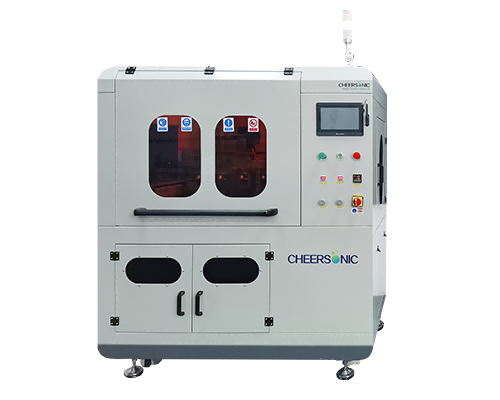Semiconductor Material Photoresist
Semiconductor Material Photoresist – Photoresist Coating – Cheersonic
Photoresist, this plays a vital role in chip manufacturing, let’s take a deep look at its role and manufacturing process.
First, let’s start with the basic concept of photoresist. Photoresist is a special material that plays a role similar to photographic film in the chip manufacturing process. It functions as a mask to transfer tiny patterns or images to silicon wafers. This is one of the key steps in manufacturing chips.
The first step in making a chip is to coat a layer of photoresist on the surface of the silicon wafer. The quality and uniformity of this layer of photoresist are critical to the final chip performance. Photoresist is a special chemical that can change after being exposed to light. Then, by using a laser light source, the pattern is transferred from the mask to the surface of the photoresist. The mask is a precisely made template with the desired pattern of the chip on it.
After being exposed to light, some parts of the photoresist will melt or soften, which is a positive photoresist. Positive photoresists contain photosensitizers that can absorb light of a specific wavelength and trigger a chemical reaction. The selection and properties of photosensitizers are critical to the preparation of high-resolution chip patterns.
Subsequently, a developer is used to remove the melted photoresist, leaving unaffected portions that match the pattern on the mask. Etching and deposition are used to precisely outline or cover the portions of the wafer that are not covered by the photoresist, thereby creating the desired chip structure. This process is similar to painting, but is performed on a very small scale.
As mentioned earlier, if the light source shines on the photoresist, but the photoresist does not soften, but becomes harder, then this is a negative photoresist. The properties of negative photoresist make it exhibit strong stability and durability when manufacturing chips.
The formulation of photoresist is a complex puzzle. Different manufacturers use different formulations, but they usually include resin sensitizers, solvents and other additives. Sensitizers are the core of photoresists because they absorb specific wavelengths of light and trigger chemical reactions.
The preparation of photoresists involves complex processes and technologies, such as the Dubois effect. This effect is due to the fact that when the light source shines on the photoresist, it must penetrate the photoresist to trigger a series of reactions. However, the bottom of the photoresist is a silicon wafer, which reflects the light, resulting in the superposition of light, thus forming the so-called auxiliary wave effect. This results in uneven distribution of light intensity in the photoresist, an effect that is particularly pronounced under deep ultraviolet light. Solving these problems requires manufacturers to fine-tune the formulation of the photoresist to ensure the final pattern quality.
Ultrasonic spraying systems have been proven to be used in various applications that require uniform and repeatable photoresist or polyimide film coatings. The thickness control range is from submicron to more than 100 microns, and any shape or size can be coated.
Ultrasonic spraying technology is used for semiconductor photoresist coating. Compared with traditional coating processes such as spin coating and dip coating, it has the advantages of high uniformity, good encapsulation of microstructures, and controllable coating area. In the past 10 years, it has been fully demonstrated that the 3D microstructure surface photoresist coating using ultrasonic spraying technology, the prepared photoresist coating is significantly higher than the traditional spin coating in terms of microstructure wrapping and uniformity Craft.
The ultrasonic spraying system can precisely control the flow rate, coating speed and deposition volume. Low-speed spray shaping defines atomized spray as a precise and controllable pattern to avoid excessive spray when producing a very thin and uniform layer. The ultrasonic spray system can control the thickness from sub-micron to more than 100 microns, and can coat any shape or size.
About Cheersonic
Cheersonic is the leading developer and manufacturer of ultrasonic coating systems for applying precise, thin film coatings to protect, strengthen or smooth surfaces on parts and components for the microelectronics/electronics, alternative energy, medical and industrial markets, including specialized glass applications in construction and automotive.
Our coating solutions are environmentally-friendly, efficient and highly reliable, and enable dramatic reductions in overspray, savings in raw material, water and energy usage and provide improved process repeatability, transfer efficiency, high uniformity and reduced emissions.
Chinese Website: Cheersonic Provides Professional Coating Solutions


